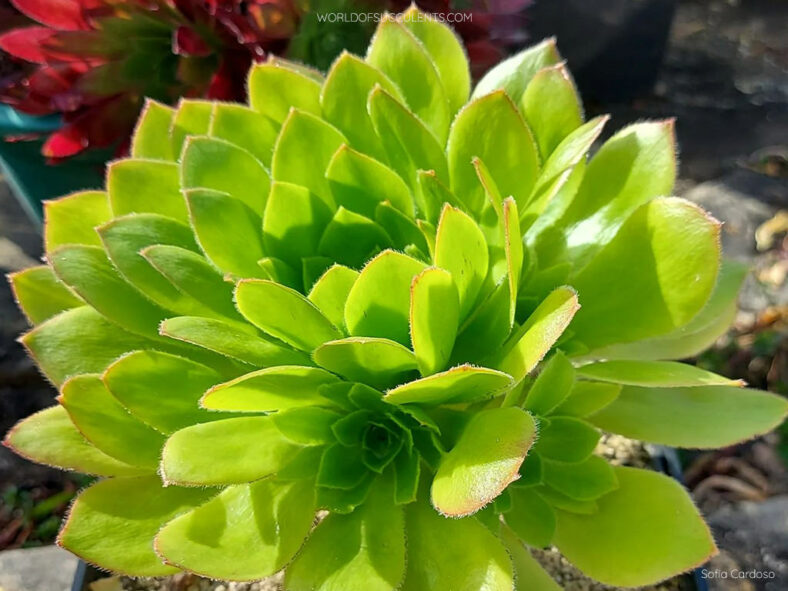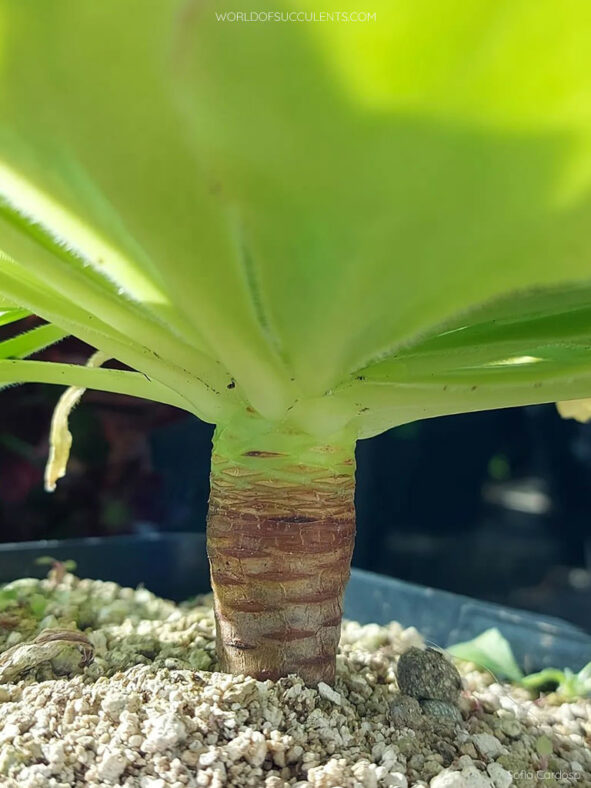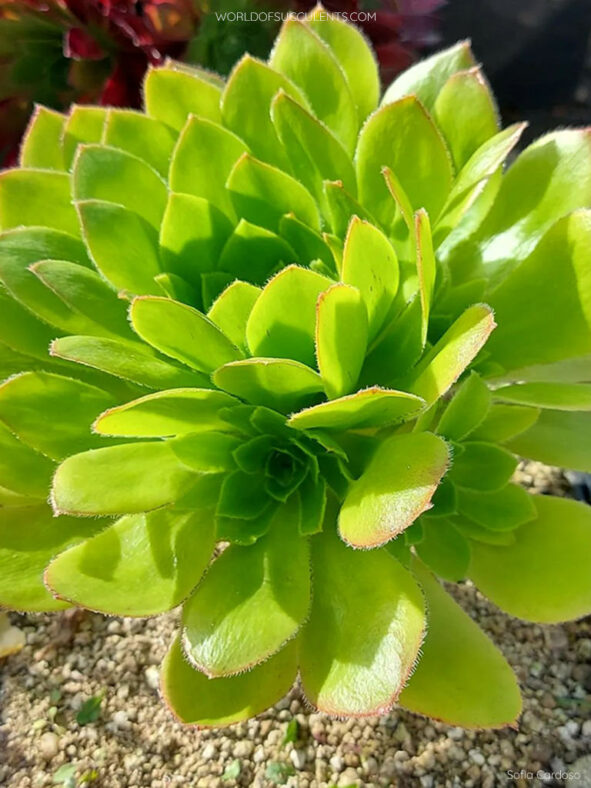Aeonium ×praegeri is a natural hybrid that results from a cross between Aeonium simsii and Aeonium undulatum.
Scientific Name
Aeonium ×praegeri G.Kunkel
Scientific Classification
Family: Crassulaceae
Subfamily: Sempervivoideae
Tribe: Aeonieae
Genus: Aeonium
Etymology
The specific name "praegeri" (pronounced PRAY-ger-ee) honors the discoverer of this hybrid, Robert Lloyd Praeger (1865-1953), an Irish naturalist, writer, and librarian.
Origin
Aeonium ×praegeri is native to the Canary Islands. It occurs in Gran Canaria at about 3,150 feet (960 m) above sea level.
Description
Aeonium ×praegeri is a small succulent with long, green leaves arranged in rosettes at the end of thick, dark grey, quite long stems. The leaves are intermediate between those of Aeonium simsii and Aeonium undulatum. They are less spathulate than in Aeonium undulatum and have green-immersed glands on the underside and margins adorned with translucent cilia, measuring up to 4.8 inches (12 cm) long and 1.6 inches (4 cm) wide.
In the spring, Aeonium ×praegeri produces yellow, star-shaped flowers in a large conical cluster on a long, ascending, densely leafy stalk, similar to Aeonium simsii. The flowers are usually 9-merous.

How to Grow and Care for Aeonium ×praegeri
Light: Aeonium ×praegeri thrives in full sun to partial shade, but in summer, light shade may be necessary, especially during the hotter afternoon hours. When growing indoors, ensure it receives as much bright, indirect light as possible to prevent the plant from becoming leggy and stretched.
Soil: Unlike most succulents, this plant requires a sandy loam or regular potting soil amended with perlite. Avoid placing it in premade soil mixes designed for succulents since it needs more moisture than they typically provide.
Temperature: Aeonium ×praegeri does not like hot or dry weather, so it may go dormant in the summer. It grows best in USDA Plant Hardiness Zones 10a to 11b, with average minimum winter temperatures ranging from 30 to 50 °F (-1.1 to 10 °C).
Watering: Water the plant thoroughly in spring and fall, allowing the soil to dry before watering again. During the winter, water it more sparingly. Although this plant requires more water than most succulents, too much moisture can lead to root rot. During its dormancy in summer, stop watering except in arid conditions.
Fertilizing: To stimulate growth and improve the plant's appearance, apply a water-soluble fertilizer diluted to half the recommended strength only during the growing season.
Repotting: If growing Aeonium ×praegeri in a container, repot it every two to three years during the spring. Choose a container with drainage holes to prevent root rot.
Propagation: The easiest method to propagate this plant is by stem cuttings during the growing season. It is crucial to allow the cut end to dry for several days before planting. Another option is to start the plant from seeds by sowing them in spring.
Learn more at How to Grow and Care for Aeonium.
Toxicity of Aeonium ×praegeri
Aeonium ×praegeri is considered non-toxic, so growing around children and pets is safe.
Links
- Back to genus Aeonium
- Succupedia: Browse succulents by Scientific Name, Common Name, Genus, Family, USDA Hardiness Zone, Origin, or cacti by Genus
Photo Gallery
Click on a photo to see a larger version.


